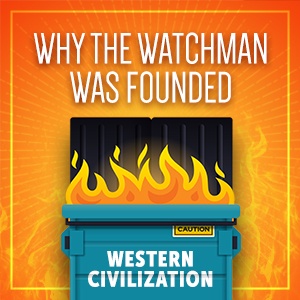
“Ah yes, the ‘pagan’ holiday is upon us – wearing costumes, carving pumpkins and handing out fistfuls of candy. It is a celebration of evil, nothing more than disguised trickery to lure humanity into paying homage to Satan himself.”
I can’t tell you how many times I’ve heard these allegations about Halloween – celebrated every year on Oct. 31 because of none other than a pope.
The word “Halloween” is derived from “all hallows eve” and literally means “holy evening.”
This “holy evening” was in celebration of what would follow the next day, Nov. 1, All Saints Day, which is in turn followed by All Souls Day on Nov. 2. Previously All Saints Day was celebrated on May 13, but eighth century Pope Gregory III moved it to Nov. 1, the day All Saints Chapel was dedicated at St. Peters Basilica in Rome. Later in the eighth century Pope Gregory IV issued an official letter establishing that All Saints Day would be observed everywhere, along with an evening vigil called “all hallows eve.”
Some historians believe Pope Gregory III chose Nov. 1 as the dedication day at the All Saints Chapel in order to counter the pagan “day of the dead.” It was indeed quite common for Christianity to take pagan holidays and reclaim them for Christ, creator of all.
The grim and ghostly representation of death on “all hallows eve” was to remind Christians of their own mortality and a very real spiritual battle that ensues to claim a soul for eternal damnation or for eternal life. This is an incredibly important reminder.
More recently attempts have been made to cast Halloween as a descendent of the ancient Celtic fall harvest known as Samhain. There is zero evidence that either of the two popes responsible for “all hallows eve” were even aware of Samhain. The word Halloween itself has no roots whatsoever in Celtic ancestry and the first attempt to link the two holidays didn’t come until more than 1,000 years after Pope Gregory IV named All Saints Day a universal feast.
Yes, the atheists, the anti-Christian and self-proclaimed Satanists would like nothing more than to claim a deeply rooted Christian holiday as their own. And with $9 billion spent in the U.S. there is no doubt that Halloween, much like Christmas, Easter, St. Patrick’s Day and St. Valentine’s Day, has had its fair share of materialistic and worldly pagan influence. And though it’s not in the history books I am confident neither pope responsible for this holiday anticipated mounds of candy being poured out onto living room floors.
Those who oppose Christianity will revel in the macabre side this Halloween, but their delight in the dark and evil should not dupe Christians into thinking we only have two options – ignore Halloween or join in on some kind of twisted admiration of it. The spooky images are not meant to be glorified nor are they meant to be ignored. Within the historic context the macabre side should be a part of every Christian Halloween. The eve of All Saints Day reminds us that there is a battle for each and every soul for all of eternity, and that the fear of hell should be just as real as our desire for heaven.
So. this Halloween when you go to hang the plastic skeletons or take the kids trick-or-treating at the neighbor’s house with the tombstones in the yard, seize the opportunity to talk with your kids about why this night is indeed a “hallowed evening.” Talk with them about human mortality and the gravity of what is at stake for all of eternity. Talk with them about the very real spiritual battle that is waged every day. And most importantly celebrate All Saints Day with your family on Nov. 1. Celebrate the victory of those holy men and women who now reign in heaven. Rejoice with your children and teach them that those choirs of angels and saints are cheering them on in their own journey toward eternal life with God. We must not fail our children in passing on this insight into Halloween – a holiday rooted in historic Christianity.
Happy Halloween!
The writer lives in Anchorage. She is the former host of a popular local radio and television show.







